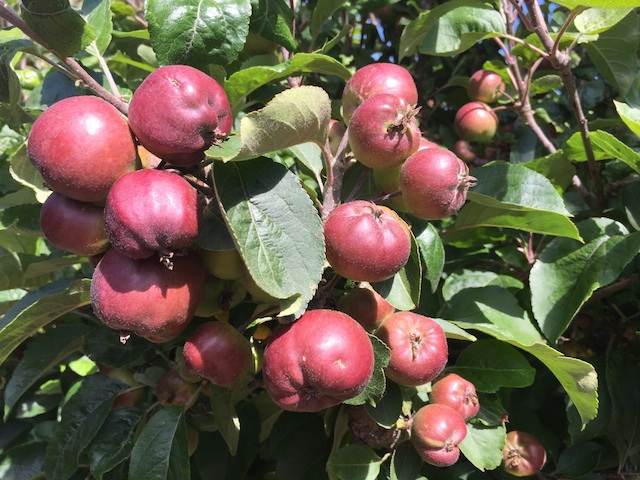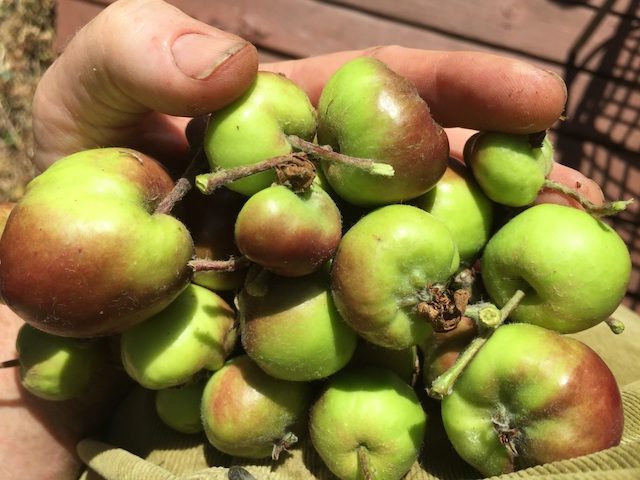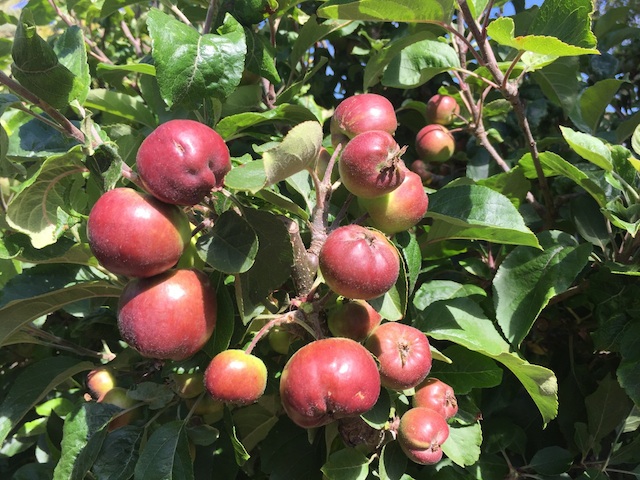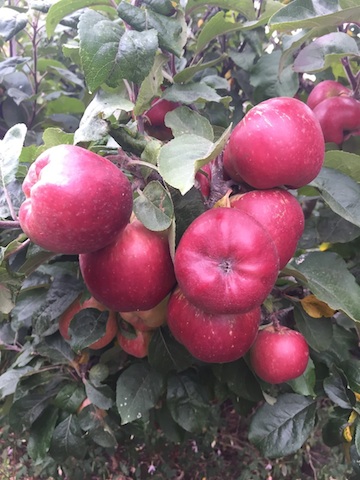In the early part of the season when luscious apple blossoms abound, it is easy to hope that every flower will produce stunning fruit. But this is not exactly the case. If you want large uniform fruit, you must thin out that abundance so that the tree does not get taxed in producing all those seeds.
Apples generally have spurs where the flowering/fruiting occurs. If a spur has 5 or more stems swelling to fruit – thinning out to two or three fruits will produce a larger fruit without costing the tree a lot more energy.

A light touch is good here to separate the stems from the spur. Breaking off the spur entirely means no fruit this year or the next, so be gentle. There should be two to three stems with developing fruit left attached after thinning. Use judgement with the apple variety and final size potential for the apple. An over weighted tree then risks breaking branches trying to carry the load of fruit to harvest.

Generally, the culls go in the compost to complete the waste into nutrient cycle. Don’t leave them to rot under the tree where they might attract insects like light brown apple moths or coddling moths. (or rats and slugs, etc…)

After thinning, the tree should begin to respond with growth on the remaining apples. One year, I did not thin and the apple tree produced MANY tiny misshapen apples. They were delicious, but the following year the tree had to take a rest and there were only a few apples produced. Taking the time to thin allows the tree to be productive without an excessive drag on nutrient requirements from year to year.

A small backyard apple tree is a joy and generally requires little maintenance beyond watering, seasonal additions of compost and light pruning. The apple shown above is a coastal apple – Cinnamon Spice – discovered in Bolinas as a wild sport. It has low chill requirements, takes coast conditions and produces a very crisp sweet apple. It is very productive and the apples ripen into color like ornaments. Trees of Antiquity carries this apple and can be ordered as bare root.